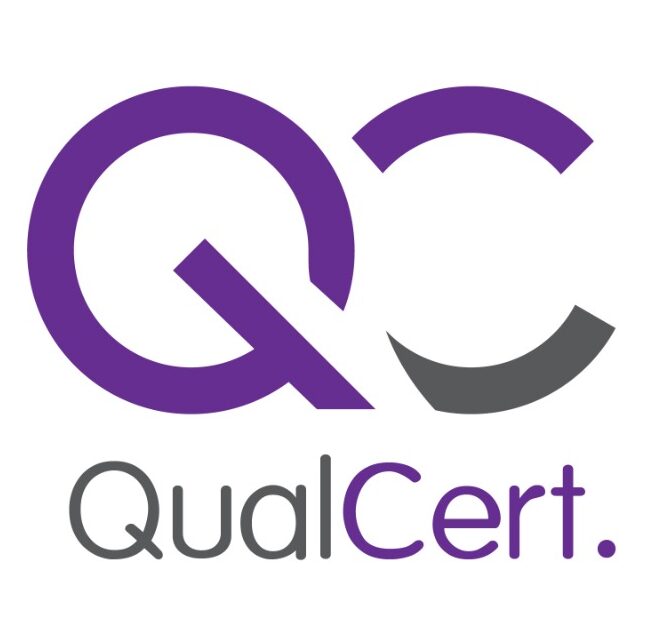The QualCert Signalman Level 1 Certificate Course is designed to equip individuals with the fundamental skills and knowledge required to operate as a competent signalman. This course aligns with UK and international safety standards, ensuring that participants are trained in best practices for directing lifting operations, communicating effectively with crane operators, and maintaining a safe working environment.
Signalmen play a crucial role in construction, logistics, and other heavy industry sectors where lifting operations take place. They act as the eyes and ears of crane operators, ensuring that loads are lifted, moved, and placed safely. This course provides foundational training for those looking to enter the profession or enhance their skills to meet industry regulations.
Successful candidates will receive the QualCert Signalman Level 1 Certificate, demonstrating their competence in signalman duties. This certification is widely recognised in the UK and internationally, helping individuals improve their employability and career prospects in industries such as construction, logistics, and offshore operations.
If you are looking to start a career as a qualified signalman, the QualCert Signalman Level 1 Certificate Course is the perfect starting point. With industry-aligned training, hands-on learning, and expert guidance, this course will equip you with the skills needed to excel in the field.
Course Contents of QualCert Signalman Level 1 Certificate Course
The QualCert Signalman Level 1 Certificate Course offers 10 Credits, requiring a Total Qualification Time (TQT) of 50 hours, including 35 Guided Learning Hours (GLH). This program enhances understanding of complex lifting scenarios, international standards, and regulatory compliance.
| Unit Ref# | Unit Title | Credit | GLH | TQT |
| QC13040-1 | Fundamentals of Load Lifting and Moving | 2 | 7 | 10 |
| QC13040-2 | Site Safety and Risk Management | 2 | 7 | 10 |
| QC13040-3 | Effective Communication in Lifting Operations | 2 | 7 | 10 |
| QC13040-4 | Equipment Inspection and Maintenance Procedures | 2 | 7 | 10 |
| QC13040-5 | Legal and Regulatory Framework for Signalmen | 2 | 7 | 10 |
Entry Requirements for the QualCert Signalman Level 2 Certificate Course:
To enroll in the QualCert Signalman Level 1 Certificate Course, Candidates must meet the following entry requirements:
- Minimum Age: Candidates must be at least 18 years old.
- Educational Qualification: A basic level of literacy and numeracy is required to understand course materials and safety instructions. No formal qualifications are necessary.
- Language Proficiency: Candidates must have a good understanding of English, as the course is delivered in English and involves critical safety communication.
- Physical Fitness: Since the role of a signalman involves standing for extended periods and using hand signals, candidates should be physically capable of performing these tasks.
- No Prior Experience Required: This is an entry-level course, so prior experience in lifting operations or construction is not mandatory. However, an interest in safety and site operations is beneficial.
Learning Outcomes of QualCert Signalman Level 2 Certificate Course:
Fundamentals of Load Lifting and Moving
- Understand the basic principles of lifting and moving loads safely.
- Identify different types of lifting equipment, including cranes, slings, and hoists.
- Recognise load weight, centre of gravity, and balance to ensure safe lifting.
- Apply correct signalling techniques to guide lifting operations.
Site Safety and Risk Management
- Identify common hazards associated with lifting operations.
- Conduct risk assessments to prevent accidents and ensure workplace safety.
- Implement control measures to reduce risks in lifting and moving tasks.
- Follow emergency procedures in case of an incident or equipment failure.
Effective Communication in Lifting Operations
- Use standard hand and radio signals to communicate with crane operators and lifting teams.
- Understand the importance of clear and concise communication in high-risk environments.
- Coordinate lifting operations effectively with team members and site supervisors.
- Handle emergency communication during unexpected situations.
Equipment Inspection and Maintenance Procedures
- Conduct pre-use checks on lifting and signalling equipment to ensure safety.
- Recognise signs of wear and damage in slings, hooks, and lifting accessories.
- Follow maintenance and reporting procedures for defective equipment.
- Understand the importance of regular inspections to comply with safety standards.
Legal and Regulatory Framework for Signalmen
- Understand the UK Health and Safety Executive (HSE) regulations related to lifting operations.
- Comply with international standards such as ISO 23853:2022 for slingers and signallers.
- Recognise the legal responsibilities of a signalman in lifting operations.
- Follow workplace policies to ensure compliance with site safety regulations.
The QualCert Signalman Level 1 Certificate Course is designed for individuals who want to develop essential skills in lifting operations and workplace safety. It is suitable for:
- Aspiring Signalmen – Those looking to start a career in construction, logistics, or offshore industries where lifting operations are essential.
- Construction Workers – Labourers, riggers, and site workers who want to expand their knowledge and enhance their safety skills.
- Crane and Lifting Personnel – Individuals working with cranes, hoists, and other lifting equipment who need to communicate effectively during operations.
- Warehouse and Port Workers – Professionals involved in material handling, cargo operations, and logistics.
- Health and Safety Officers – Those responsible for enforcing safety regulations and ensuring compliance with lifting operation guidelines.
- Supervisors and Site Managers – Individuals overseeing lifting activities who need to understand proper signaling, risk management, and equipment safety.
This course is ideal for both beginners and experienced workers looking to improve their safety awareness and career prospects in industries that rely on effective load handling and lifting operations.

